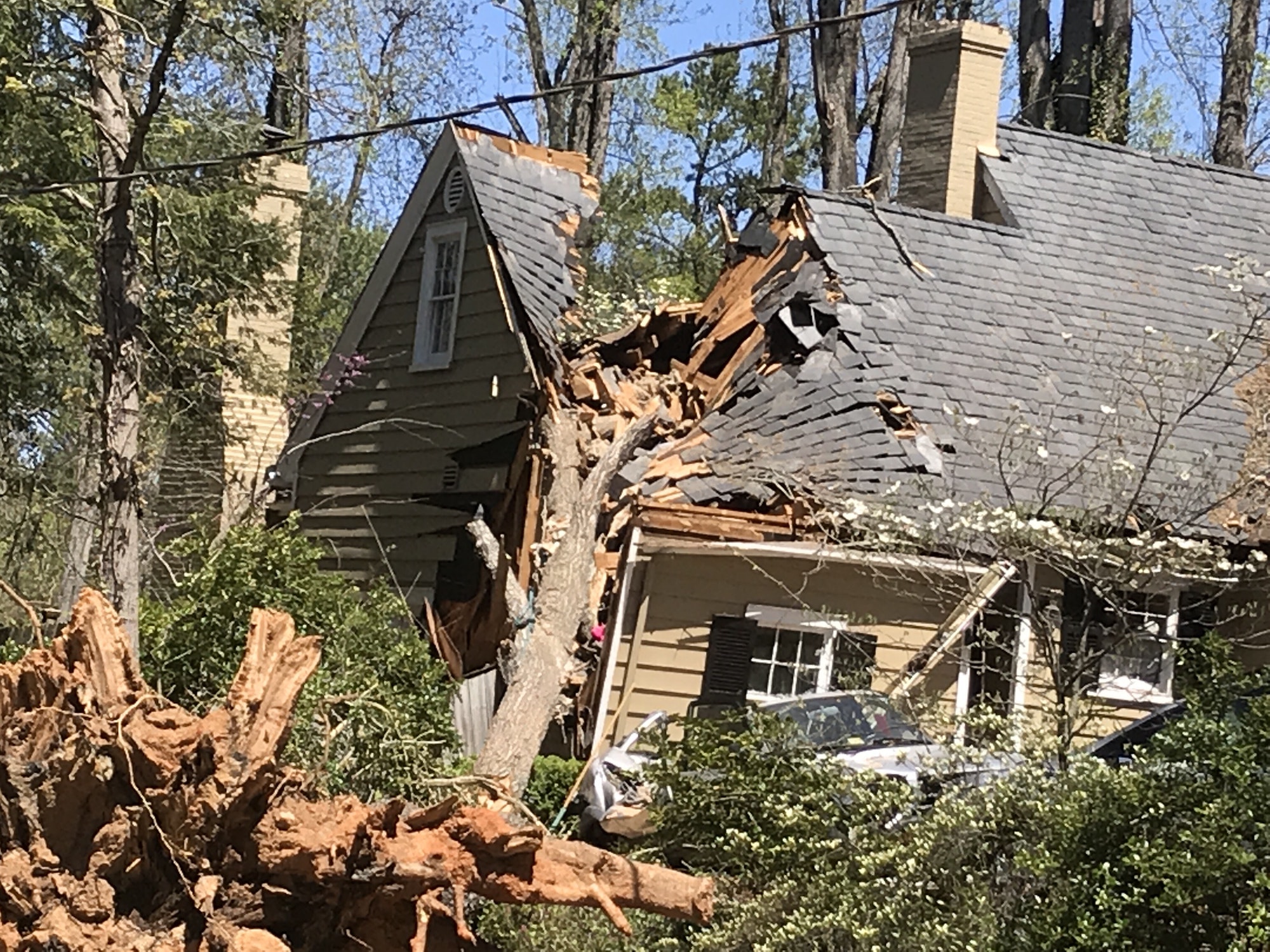
Roofing Storm Damages
Roofs naturally have to deal with the vagaries of nature and weather. They deal with extremities of sunshine, rains, storms, and many other elements. Storms, by far, pose the greatest danger to roofs. Maryland’s storm season often starts in June and ends in November. Here, we will discuss general information about roofing storm damages.
When it comes to roof damage, the extent and nature of the damage are determined by several things.
Age of the roof
An aging roof is going to be susceptible to even the slightest tests. Aging seals leave shingles exposed. Such shingles can easily be blown off. If you have an aging roof, you need to do regular inspections of the shingles, panels, underlayment, gutters, and the entire roof, especially after a storm alert.
Quality of maintenance
Every roof comes with a warranty during installation. The manufacturer’s warranty and the installer’s warranty are common. Both of them are contingent on your adherence to the scheduled maintenance plan. The warranty is voided if you cannot honor the plans. That is not the bad news yet. If your roof is not properly maintained, it means it is vulnerable. If there are small issues that needed attention, they will most certainly become bigger with time. Once the storm hit, even the smallest roof damages will be magnified.
Type of roof
Some roofs will resist even the strongest storms, such as metal roofing. However, others are not very robust. 3-tab shingles are not very robust and are not suitable for areas susceptible to strong hailstones. When choosing a roofing material, consider the weather and history of storms to choose a roofing material that can resist typical storm damages.
Quality of installations and repairs
As noted, hailstones, high winds, heavy rains, and falling debris and branches will test even a good roof to its limits. If there are any weaknesses, they will be ruthlessly exploited. If there are errors in the installations, such as ice dams, incorrect nailing, missing nails, and incorrect flashing, expect them to be your roof’s Achilles heel.
Share This Post:
Like us on FaceBook!
Send Us A Message
Types of roof storm damage
Hail
Hail is a falling ice. It can be as small as a spec or as big as a child’s head. It is formed when winds blow raindrops into cold areas of the atmosphere, causing them to freeze. They usually get bigger when they collide with tiny water molecules. Hailstones can be very destructive to any roof. Although normal size hailstones generally do not destroy good quality metal roofing, exposure over time can weaken the material and the integrity of the roof.
The idea is to check before and after a hailstorm fall. Checking before ensures that vulnerabilities are removed. Such vulnerabilities include missing seals, damaged shingles, damaged or clogged gutters, missing nailing, and visibly old shingles. Checking after the hailstorm is imperative. You want to know if there are significant damages to the roof. If there are, you need to repair them immediately to reduce the risk of water damage inside your home.
Your roofing repair expert will not be able to do much during a hailstorm. So, it is good to inspect the shingle bruising, lost granules, chipping, cracks, and brown spots.
High Winds
High winds can even blow off a poorly installed roof. If the structural integrity of the roof is compromised, such as sagging roofs, high winds can cause devastating damage. The speed of winds will determine the risks.
Generally, winds can blow off loose shingles, loose metal sheets, blow off loose flashing, cause chimney issues, damage fascia, and soffits, dislodge gutters, and downspouts, expose skylights, and much more. Peeling shingles, extended granule loss, and curls are also quite common.
Again, regular roof inspection or adherence to the recommended maintenance schedule can prevent extensive damage. Do so before the storm season and after. This is because a combination of high winds, hail, and rain will expose every weakness in your roof.
When winds go beyond 45mph, branches will start falling, weak trees will be uprooted, and the general debris carried by the winds can easily damage any roof, irrespective of its integrity. It is imperative to have the roof restoration company inspect the roof after a bout of high winds, hailstorms, or heavy rains, all of which tend to come as a package.
Heavy Rains
Clogged gutters and downspouts combined with heavy rains can have devastating consequences on your roof. Just before the rainy season, you must clear the gutters and check if the drainage on your roof is okay. If there are ice dams, missing shingles, damage to the gutters, or any other vulnerability that a typical storm can exploit, it is good to deal with it before the storm season.
Heavy rains generally cause water seepage, standing water, and eventually water damage. If the water enters through the roof, it will damage, among other things your interior, ceilings, and carpets. It can also cause significant moisture damage responsible for mold colonies, decay, and property damage inside your home.
Falling Debris
Branches, trees, and other objects are thrown around by high winds can cause significant roof damage. Often, the risk is holes and leakages on the floor. Once a branch falls on the roof, it can damage the shingles, underlayment, downspouts, and gutters. Sometimes the entire structure of the roof is compromised.
Ensuring that the trees in your yard are at a safe distance is an important roof care procedure. Also, checking the integrity and health of the trees nearby goes a long way in preventing potential danger. Trim trees and remove damaged trees and branches.
Removing any roof debris ensures no buildup of rot-causing and clog-causing debris, keeping your roof safe.
Roofing storm damage restoration
If you are looking for proper roof restoration services in Maryland, Prestige Restoration LLC is your best option. We have experts in storm damage restoration and damage mitigation processes. We have an expansive roofing storm damage checklist that includes attics, ceilings, gutters, chimneys, vents, and shingles. Give us a call today!

